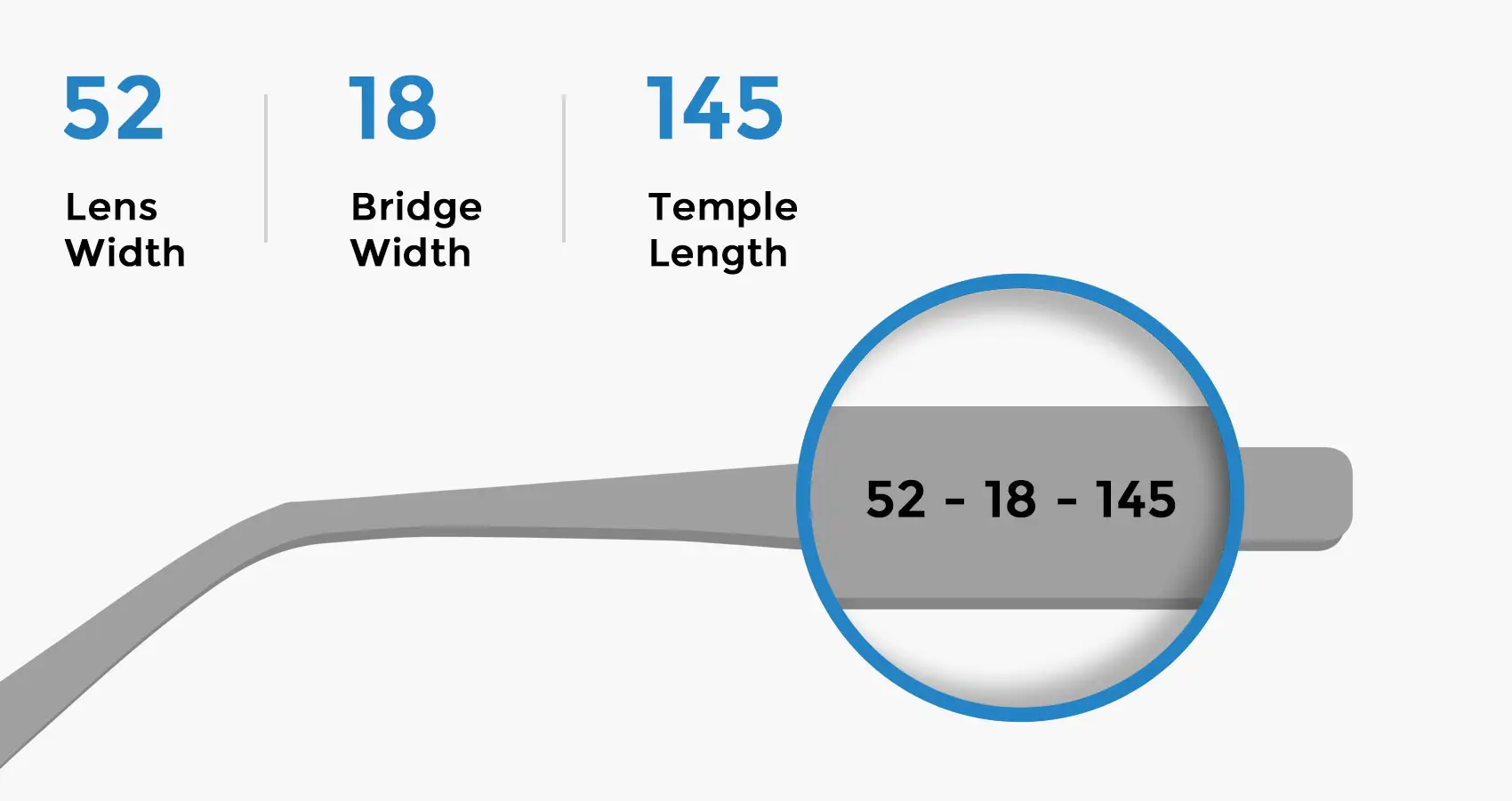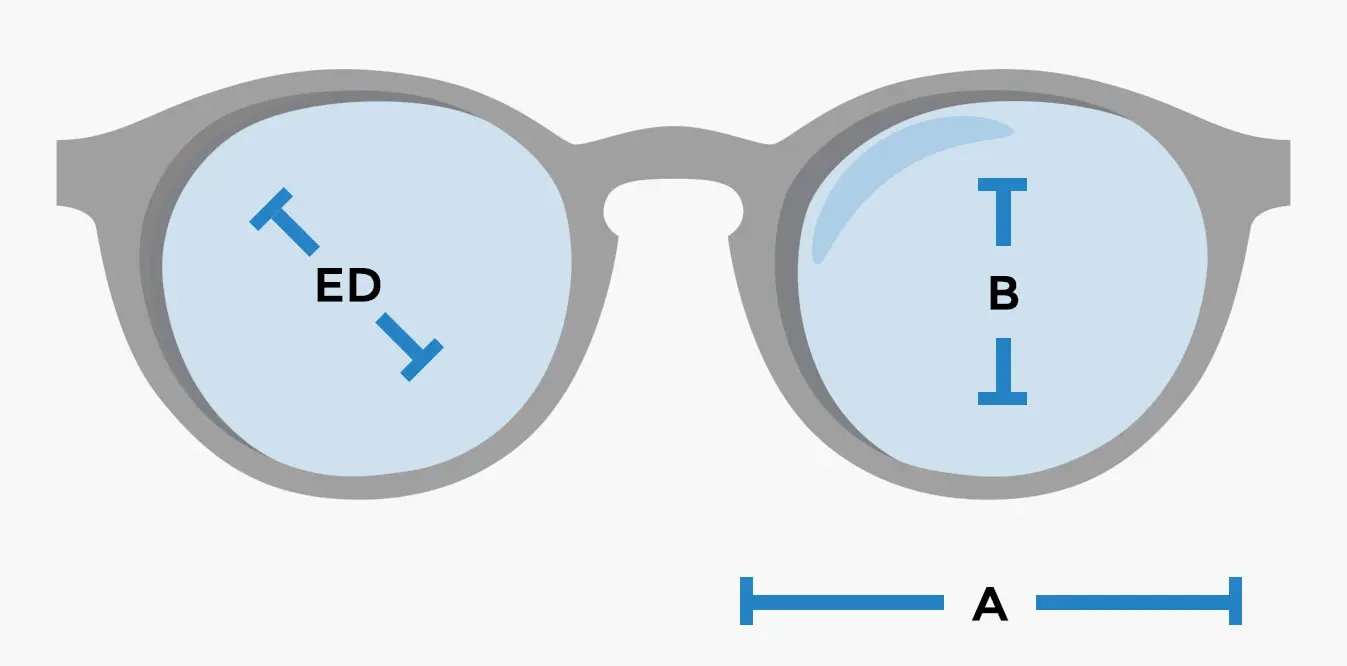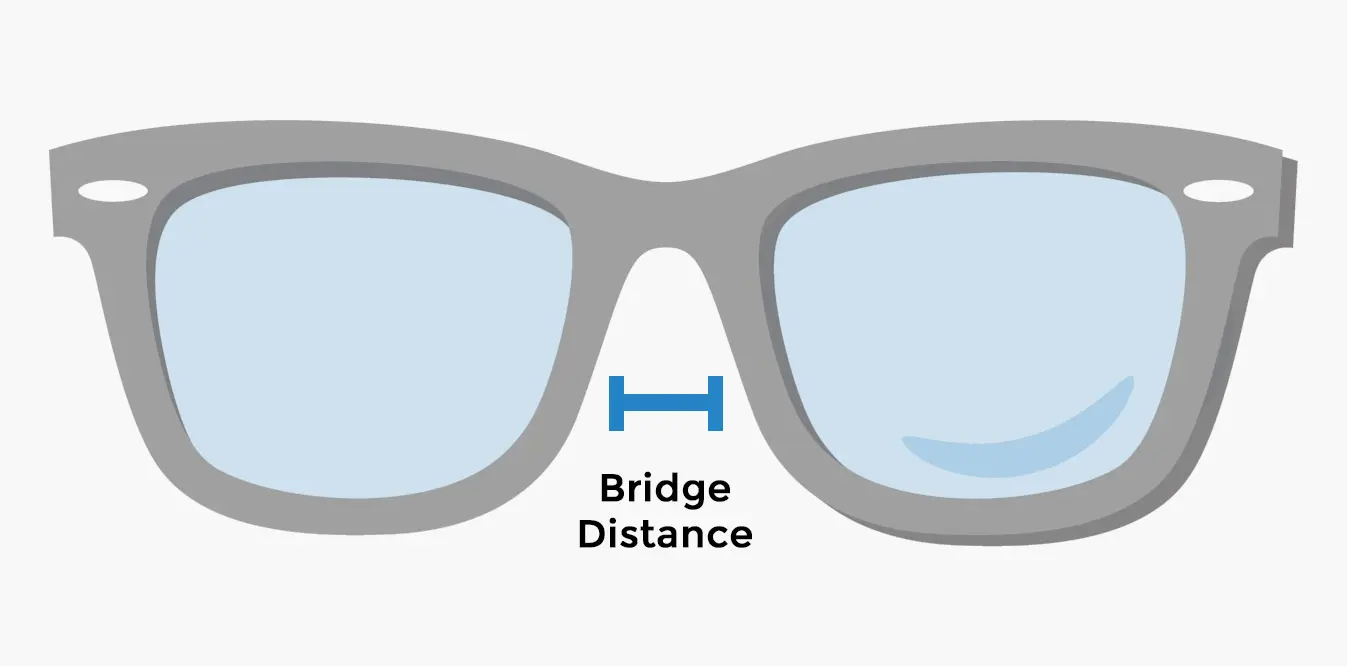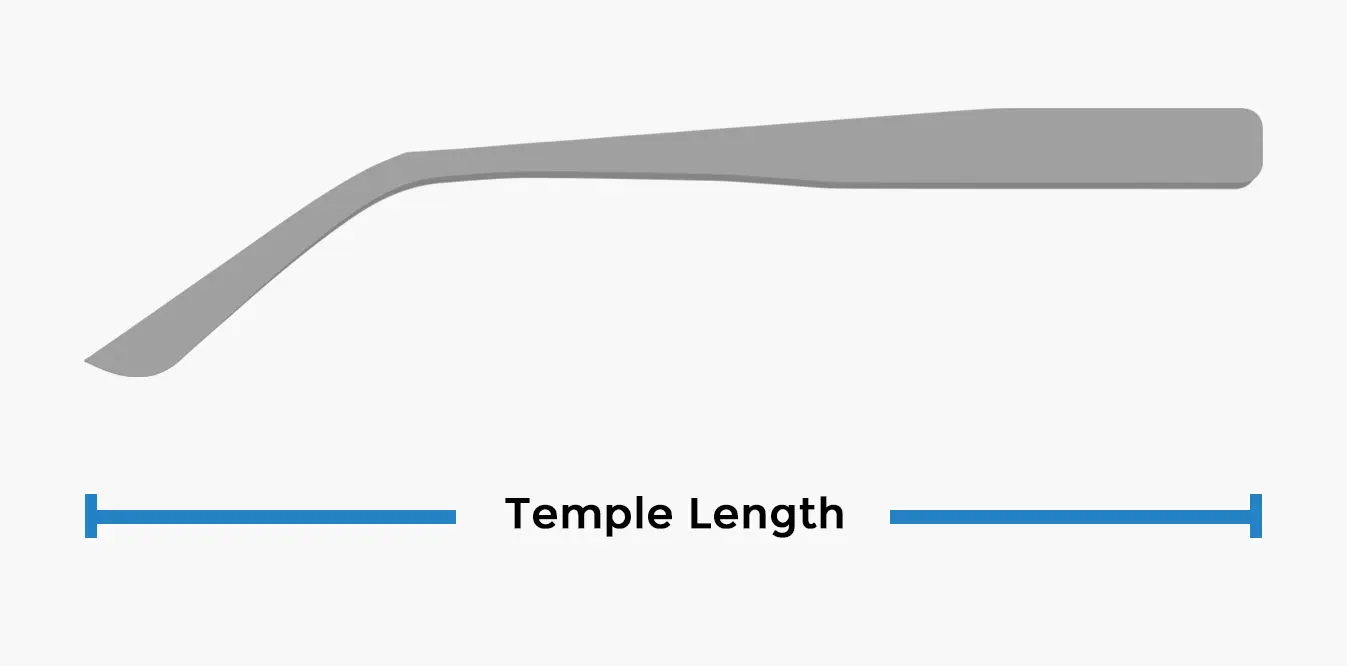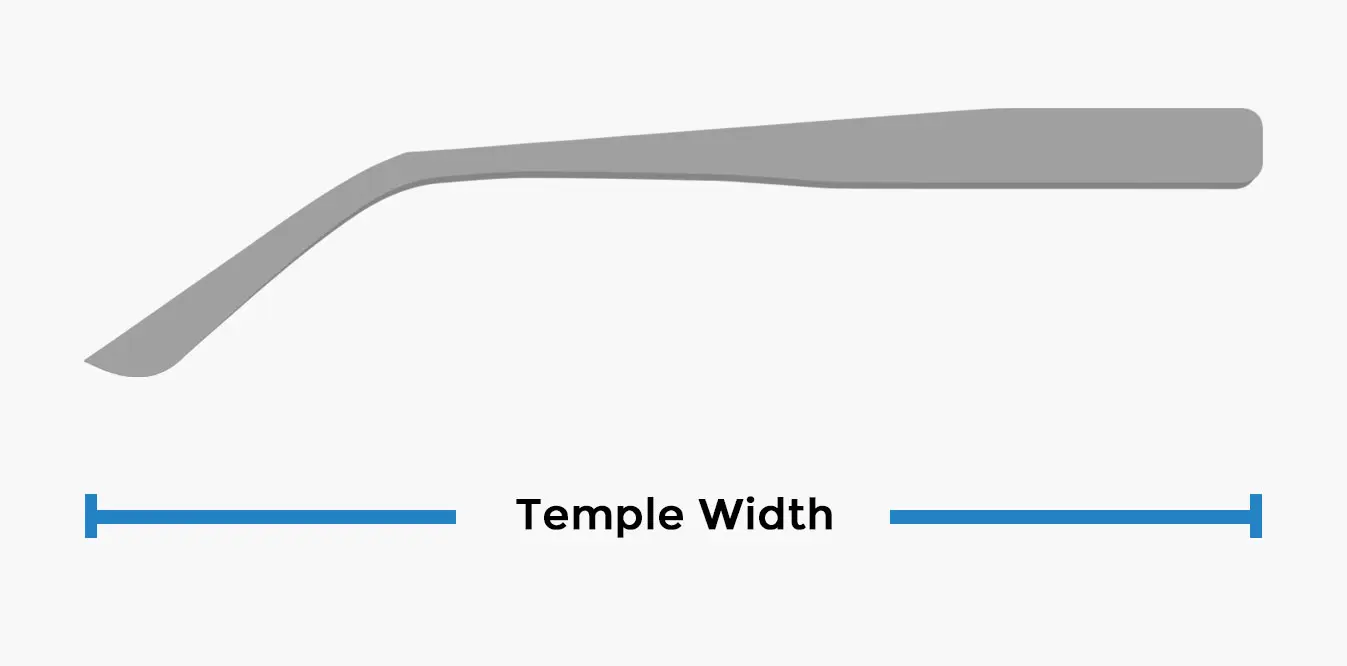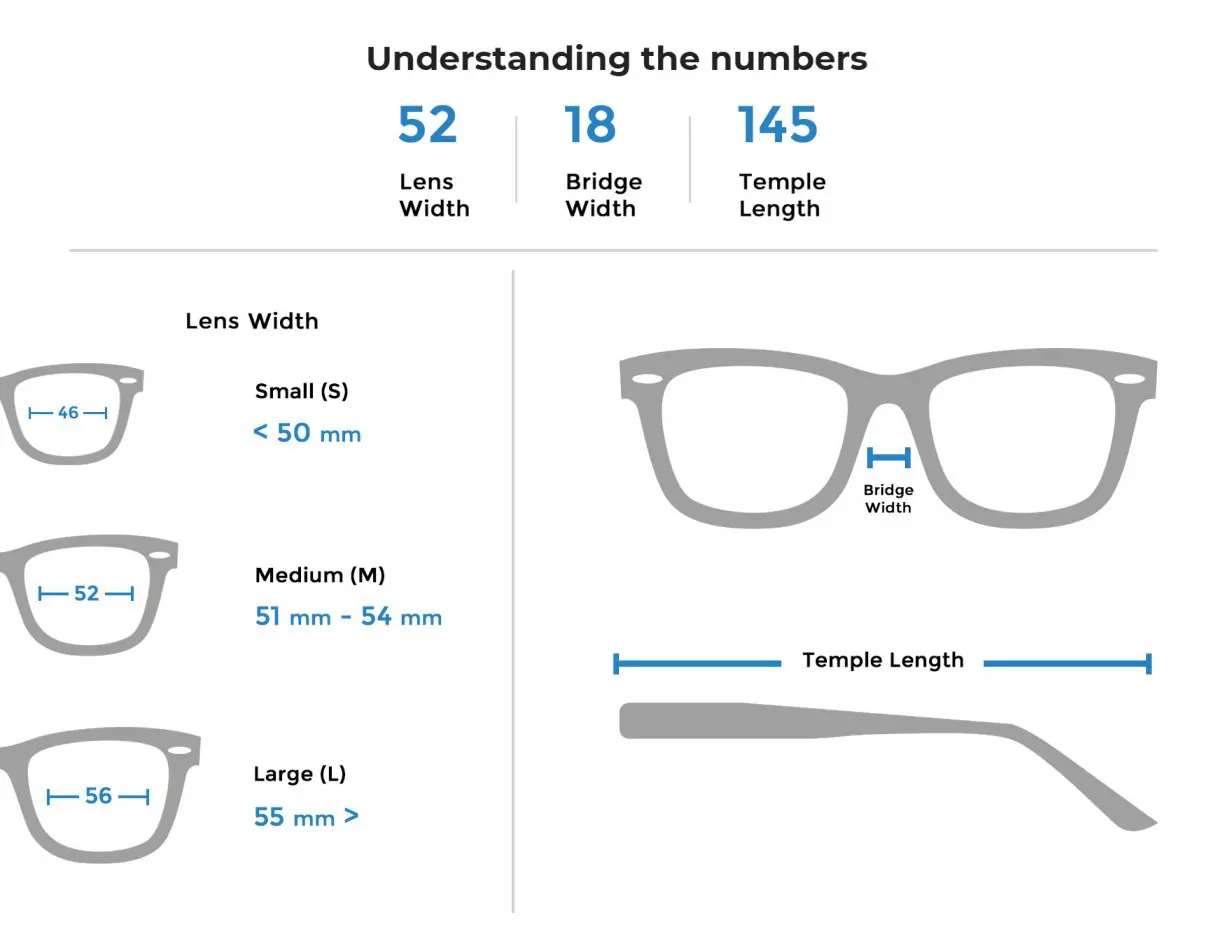Sizing Guide Video
Sizing Guide Video
Understanding the numbers
* You can locate the following measurements—lens width, bridge width, and temple length—on each frame’s left arm. Please note everything is listed in millimeters.

Useful
Tips
When purchasing glasses online, there are two measurements that are useful in helping you choose the best frame. The first is “total width” which refers to the overall width of the front of your frames (in millimeters). The second is “lens depth” which is simply the depth of the lens (also in millimeters). You won’t find these measurements on your existing frames, but you can easily measure them at home with a ruler.
Useful
Tips

When purchasing glasses online, there are two measurements that are useful in helping you choose the best frame. The first is “total width” which refers to the overall width of the front of your frames (in millimeters). The second is “lens depth” which is simply the depth of the lens (also in millimeters). You won’t find these measurements on your existing frames, but you can easily measure them at home with a ruler.
Know your A, B, ED
Find your A: Measure the longest horizontal distance inside the frame edges in millimeters.
You’ll get your B by measuring the longest vertical distance inside the frame edges, also in millimeters.
ED is the longest diagonal distance inside the frame edges, measured in millimeters.
Bridge width
The bridge width is the distance between the two lenses.
It’s measured horizontally at the top of the frame. The ideal style is the one where the bridge of the frame contours has as little gapping as possible within the shape of your nose.
Temple Length
Temple length is the standard measure for the “arm” of the frame.
It is measured from each screw to the temple tip, along with the bend that sits on the ear.
A quick tip: Temples are usually 120mm to 150mm long.
If you previously had issues with temples being too short, opt for those around 145-150 mm.
Know your A, B, ED
Find your A: Measure the longest horizontal distance inside the frame edges in millimeters.
You’ll get your B by measuring the longest vertical distance inside the frame edges, also in millimeters.
ED is the longest diagonal distance inside the frame edges, measured in millimeters.
Bridge width
The bridge width is the distance between the two lenses.
It’s measured horizontally at the top of the frame. The ideal style is the one where the bridge of the frame contours has as little gapping as possible within the shape of your nose.
Temple Width
Temple length is the standard measure for the “arm” of the frame.
It is measured from each screw to the temple tip, along with the bend that sits on the ear.
A quick tip: Temples are usually 120mm to 150mm long.
If you previously had issues with temples being too short, opt for those around 145-150 mm.

Exchange
Policy
bluwinx will exchange your nonprescription glasses one-time within thirty (30) days of purchase for glasses of comparable value due to a customer wanting a different size, color, or style.
Exchange
Policy

bluwinx will exchange your nonprescription glasses one-time within thirty (30) days of purchase for glasses of comparable value due to a customer wanting a different size, color, or style.
bluwinx will exchange prescription and “readers” one-time within thirty days of purchase for glasses of comparable value due to a customer wanting a different size, color, or style. If new lenses are required, (50%) of original lens price will be credited towards new lenses. Prescription lenses are custom-made and cannot be resold therefore we don’t apply full credit on exchanges. A lens fee applies. Read more…

